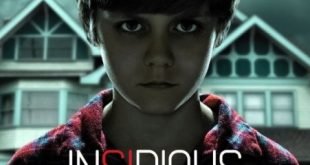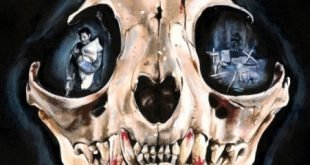
Béla Ferenc Dezo Blasco was born 20 October 1882 in the small Austro-Hungarian, or rather the Transylvanian town of Lugos (now, like all Transylvania belongs to Romania). His family belonged to the middle class, and he was the fourth child. Overwhelmed with the desire to become an actor, twelve-year-old Hungarian escapes from his native town, where he will never return. Soon after the escape of Bela his father dies. But the kid cannot find a job you love, it took only the mines and marshalling yards of Railways (no wonder he always sympathized with the workers and the poor).
In the end, his older sister gave him small roles in provincial theatre town of Szabadka. Little Bela, absolutely not trained in acting (unlike most Hungarian actors), studied hard and honed his skills, until he finally began to gradually move up, getting a more substantial role, moving to a larger Hungarian city. Initially, his nickname was “Lugosi” (with a hint of aristocracy), which was later simplified to Lugosi, ie just a native of the town of Lugos. He played many roles, sometimes up to 40 per year. In his youth he had a good voice and he often played in operettas. Especially he managed the role of Romeo, which in 1911 was invited to major theatres of Budapest, where he earned a lot of popularity. During the First world war he went to the front as a volunteer (although he could not go – the actors were exempt from military service). A Lieutenant of infantry (i.e. infantry) he served until 1916, and was wounded three times and awarded (but with us, I suppose, the enemy fought! Although maybe with the Italians, and maybe Romanians or Serbs).
Lugosi on the stage.

Lugosi’s film career began in 1917, soon after his return from the army. He was unhappy with the theatrical career, which in fact led nowhere. Therefore, having become acquainted with the producer and Director Alfred DISI, he signed with his firm “Star Movies” the two-year contract and starred in nine films. Also in Hungary he starred in three films of the film company “Phoenix”, which was directed by Michal Carter, who, after emigrating to the United States he changed his name to Michael Kurtic and filmed in Hollywood films such as “Casablanca” and “the adventures of Robin hood” (it is interesting that in Hollywood, Lugosi did not cooperate with Certicom). In the Hungarian cinema, he performed under the pseudonym Arisztid OLT, apparently not wanting to spoil his theatrical name of some cinematography. His first step to the horrors can be called the last Hungarian film “the Royal life” (Az Elet Kiralya), which was an illegal version of the novel by O. Wilde “the picture of Dorian gray”. Lugosi was heavily embroiled in the political events of their country and actively participated in creating the short-lived Hungarian Soviet Republic, including organized Actor the Union. After the fall of the Hungarian Communist he had to run.
Lugosi’s acting career continued in Germany, where he starred in 11 films. In 1920, he starred in the film “Head of Janus” (Der Januskopf) for the company Lipow Film, which was a transcription of the novel by Robert Louis Stevenson about Dr. Jekyll and Mr. Hyde. Lugosi played Dr. Hyde, and directed this film Murnau, who will go down in history thanks to “Nosferatu” (interestingly, about Lugosi, and about Murnau was filmed a good movie). Also among his German films such as “Caravan of death” (Die Todeskarawane) and “a devil worshipper” (Die Teufelsanbeter). However, the actor decided to try his luck in the New world and in December 1921 he arrived in new York, where he established a Hungarian-speaking company, and in 1923 already appeared on Broadway (though still speaking English). The role of Fernando, the Spanish Apache, he learned purely phonetically, i.e. it did not understand the words that were said! From 1923 to 1928 Lugosi starred in seven silent films, mostly in small roles. Simultaneously, she worked on Broadway, where the revolution was accomplished.
Lugosi in the image of Dracula.

In 1927 was staged a new play “Dracula”in which Lugosi played the Count a Vampire. We can say that this role has defined his whole subsequent life. For two years he played Dracula in new York and in a tour of the East coast. Its a game in 1928-29 years in California attracted the attention of major film studios. He starred in a series of films, until finally, in 1931, did not repeat his role in the film, TOD Browning’s “Dracula”than myself and deserves immortality. But first work with TOD Browning on the set of the film “the Thirteenth chair” (The Thirteenth Chair) – classic detective story. However, when the movie became sound, greatly increased the role of censors who established the rating of this film and decided who can see and who does not. And in 1929 the film “the Thirteenth chair” defined in a completely new category, called the letter “H” that meant “Horror”, ie Horror. Thus was born the official name of the genre, which was very tenacious. So “the Thirteenth chair” is the first American film officially recognized the horror! Lugosi played a secondary role.
“Dracula” not only has approved a new standard for the image of the vampire, but also played a significant role in the life of white. On the one hand, he became known and popular, but no one saw him in another role, now it took almost exclusively in horror movies. Despite his desperate and stubborn resistance to the stereotypes of the casting, the horror and stayed in Hollywood to his fate. His next film was “the Murders in the Rue Morgue” (Murders in the Rue Morgue), where he played a possessed scientist Dr. Miracle. It was a kind of mini consolation prize after his previous error: Lugosi was supposed to play the role of Frankenstein’s monster, but after the test shots of the makeup, made around the castle of Dracula, Lugosi refused the role because he thought it futile. It was handed to Boris Karloff, and so was born one legend, the main competitor of Lugosi. Bela was very much upset, that he refused such a good luck and has allowed the competitor to Eclipse itself.
Following the film “White Zombie” (White Zombie) was released in July 1932, Lugosi played the evil Lord zombie. For this atmospheric classic Lugosi received thousands of dollars (and the film, shot in 11 days, cost Universal $ 100 thousand). Many critics call the evil Legendre best role Lugosi. Released in October of 1932, “MAG North” (Chandu the Magician) Lugosi played the We – villain who wants to destroy half the world and rule the remaining half. We considered one of the best villains of comic book type appearing on the screen. In January 1933 came the “Island of lost souls” (Island of Lost Souls), the film adaptation wellnissage “the Island of Dr. Moreau,”which is considered one of the best horror films of the early 30-ies. The character Lugosi, though minor, but in the film plays a key role.
His next film (also released in January of 1933) was a bad omen. “Kiss of death” (The Death Kiss) was a detective in a role Lugosi is not only secondary, but also not too not needed – his character does almost nothing. Lugosi was called only for a known name. Moreover, the film’s title and posters allegedly allude to the vampire film, to attract fans of Lugosi. In General, in this film Bela for the first time played a role zits-the Chairman. In the same year, he married Lillian Arch, which five years later bore him a son, Bela Lugosi Jr.
The next horror movie Lugosi was the “Black cat” (The Black Cat), as if based on the same story, but actually the film is more learned from the life of Aleister Crowley, the famous occultist and Satanist. Bela plays a positive character, Dr. Vitus verdegast’s. This film was called the most “unhealthy” film of the 30s, but it is more interesting because for the first time in one picture appeared Lugosi and his main rival, Boris Karloff. In October 1934 there was the first sequel to the Lugosi – “the return of the North”, though he has somehow retrained the main negative main positive hero of the North. In may 1935 he published a picture of the”Mark of the vampire” (Mark of the Vampire), in which Lugosi again plays an immortal bloodsucker (but not Dracula). And again, the film directed by TOD Browning, though less successfully – “Mark” turned out to be a mixture of two of his previous vampire films is “London after midnight” and “Dracula”, including the drawing of some dialogs. That you would not especially bother reading a dry biography, just give a list of subsequent horror movies, which starred Bela: “the Raven” (The Raven) (1935) (based on the eponymous poem, Lugosi is a mad scientist), “the Mystery of the Mary Celeste” (Mystery of the Mary Celeste) (1935) (based on the true story of the mysterious disappearance of the ship, this is the first appearance Lugosi in British cinema, and the film Studio “hammer”), the Invisible ray (The Invisible Ray) (1936) (again Bela + Boris).
After 1937, Lugosi and a half years never filmed, until finally he was in the film “Son of Frankenstein” (Son of Frankenstein), released in January of 1939. He had to beg to be given a role in the film, as he is just a child, and because of the lack of money he had to leave his old house. For this film, Lugosi received $ 500. Originally he was supposed to play the Inspector, and the role of Igor in the scenario did not exist (however, in this film, many things were fixed during filming). So Lugosi played a second classic role – hunchback Igor, with rotten teeth and a raspy voice. Oddly enough, it was his favorite film role. Also a kind of balm for the heart Lugosi was a very weak kind of Monster, played by Karloff, in contrast to his sparkling Igor.
After this good luck a career Lugosi is a little normal – in the same year, he starred in the films “Gorila” (The Gorilla) (the “old dark house”), “the Phantom menace” (The Phantom Creeps) and the British “Dark eyes of London” (The Dark Eyes of London). This was followed by “Black Friday” (Black Friday) (1940), “You know” (You’ll Find Out) (1940) (another film about the “old dark house”), “Devil bat” (The Devil Bat) (1941) (giant bats), another “Black cat” (The Black Cat) (1941) (which, however, was also quite far from the literary prototype), “Invisible Ghost” (The Invisible Ghost) (1941), “Fear of freedom” (Spooks Run Wild) (1941), “Man-Wolf” (The Wolf Man) (1941) (where he played the role of Gypsy Bela), “Ghost of Frankenstein” (The Ghost of Frankenstein) (1942) (again the role of Igor, which, though paid more attention, but played it Lugosi not as brilliant as the first time), “Black dragon” (Black Dragons) (1942)”Disappearance of the corpse” (The Corpse Vanishes) (1942), “Bowery at midnight” (Bowery at Midnight) (1942), “Night monster” (Monster Night) (1942).
In 1943, Lugosi finally played Frankenstein’s Monster, a role, which was abandoned in 1931. He did it in the movie “Frankenstein meets the wolf man” (Frankenstein Meets the Wolf Man). However, the Studio is incredibly butchered this film before release to the screen. First, it was decided that Hungarian accent of Lugosi is not good for a Monster and just cut out all the scenes where he’s talking about. They also destroyed all references to his blindness, so viewers were perplexed, why is it moving like that. But the movie itself was very successful and spectacular that launched the fashion for “bleeding” of monsters. Further, Lugosi starred in the films “the APE” (The Ape Man) (1943), “Ghosts on the loose” (Ghosts on the Loose) (1943), “return of the vampire” (The Return of the Vampire) (1944) (Lugosi finally returned to the classic vampire theme, and 61 year proved that he remains the Lord of the Vampires), “Voodooist” (Voodoo Man) (1944), “The return of the monkey Man” (Return of the Ape Man) (1944), “One body too many” (One Body Too Many) (1944), “body Snatchers” (The Body Snatcher) (1945) (this film with Lugosi and Karloff called almost the best horror film of the 40’s), “Zombies on Broadway” (Zombies on Broadway) (1945), “Scared to death” (Scared to Death) (1947) (this is the only color film Lugosi).
Film poster of “Black Friday”.

In July 1948 were followed by the horror Comedy “Abbott and Costello meet Frankenstein” (Abbott and Costello Meet Frankenstein), which became the immortal classics of the genre, which is not forget to this day. In the film, but the two comedians, Abbott and Costello, there were all the classic monsters, and in the classic version and Bela Lugosi’s second (and last) time in my life I played his classic Count Dracula, than again famous. But it is not very helpful. He stopped again to play in a movie. In 1950, the year of his tour of Britain with a film “Dracula” (1931) ended in complete failure and Bela left stranded. Richard Gordon agreed that for 5 thousand dollars Bela to star in the British horror Comedy “Old mother Riley meets the Vampire” (Old Mother Riley Meets the Vampire) (1952). Back in the States, Bela starred in another horror-Comedy “Bela Lugosi meets a Brooklyn Gorilla” (Bela Lugosi Meets a Brooklyn Gorilla) (1952), which is a parody of the once great figure Lugosi.
In 1952 a white marriage with Lillian broke up (they officially divorced in 1953), Lugosi finally sank to the bottom of his career, becoming a drug addict. In 1953 he starred in a single film “Glen or Glenda” is ed wood Junior. They met not on street, and Bela, of course, was not so close and dependent on wood as shown in the film by Tim Burton. But the fact that at the time, Lugosi’s career is almost over – fact. In 1955, Lugosi starred in “bride of the Monster” (Bride of the Monster) wood. Then Lugosi gets to the hospital, which he leaves in August 1956 with the hope to star in a new project wood “the Hum goes West”, which, however, failed and the shooting began. However, earlier this year, he could play in the film “the Black sleep” (The Black Sleep) (1956), where, however, his role is silent. The last film Lugosi the most famous call (and the worst) work of ed wood – “Plan 9 from outer space” (Plan 9 From Outer Space) (1959), however, this can hardly be called a role. Bela died after it was shot just 10 minutes into the movie. And there was only two big scenes, one of which depicts Dracula Bela (she repeated in the film several times).
After the death of Lugosi became a truly iconic figure, and his life, and even more death, overgrown with legends. Here are a couple of them: Bela Lugosi was buried in the Dracula costume… According to legend, at the funeral of actor another great film villain Vincent Price was so shocked by the appearance of the deceased, I asked someone from the audience: “Can we, in any case, to drive him in the heart with a stake?”. Comedian Joey Bishop, hearing of the death of Lugosi, in all seriousness said: “He’ll be back!”.
Martin Landau in the role of Bela Lugosi (“ed wood”, 1994).

Copyright © 2009 – 2017 Horrorzone.ru
© 2017 – 2019, paradox. All rights reserved.





